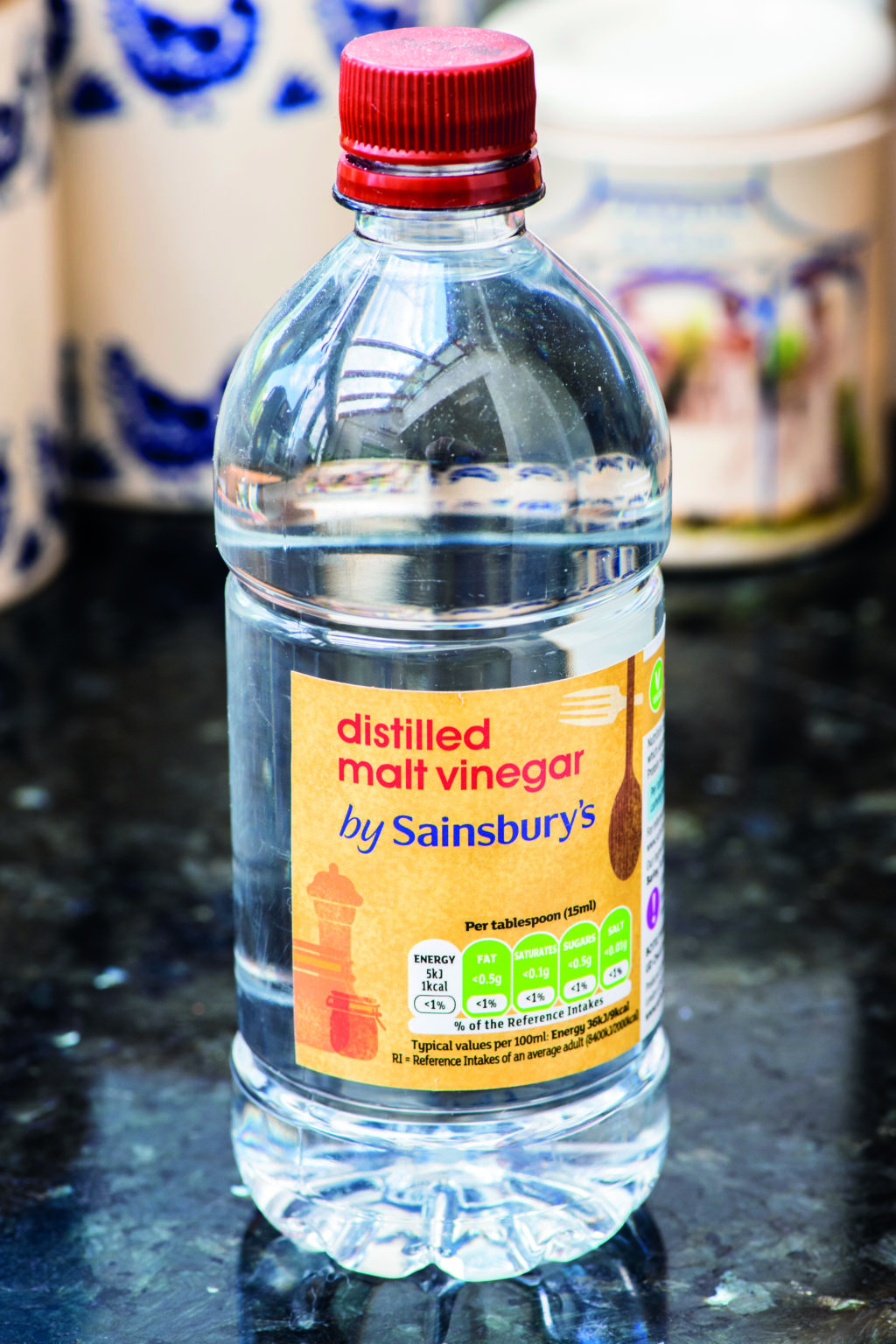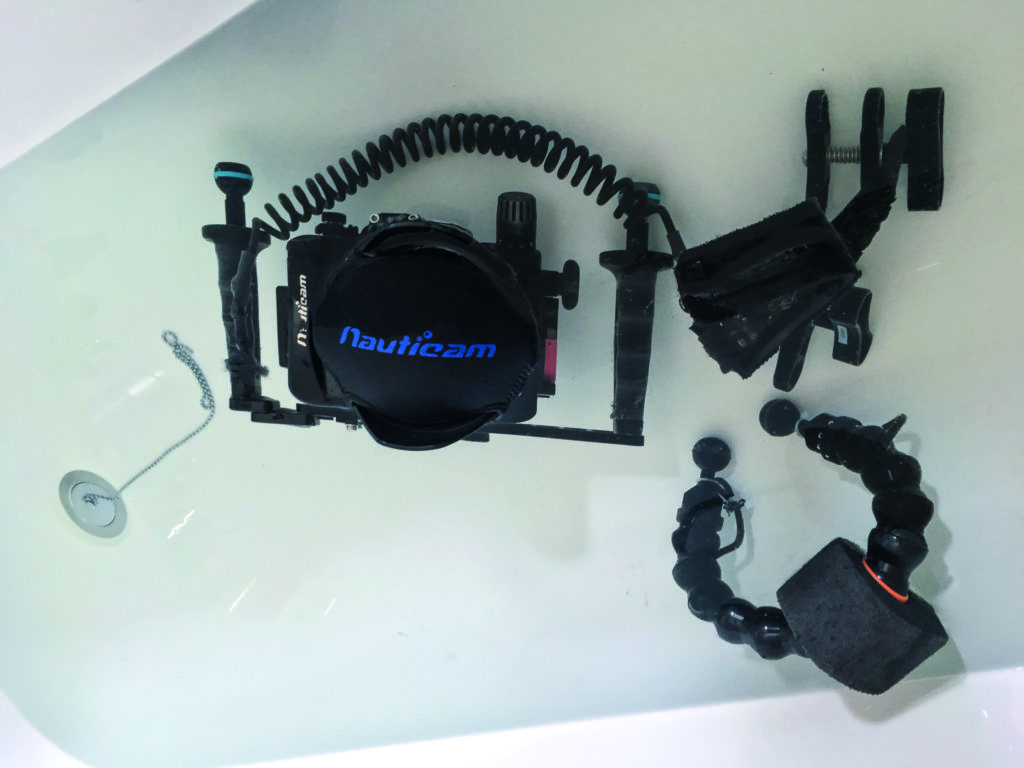We ask our panel of experts what routine maintenance/care do they carry out on their gear both pre- and post-dive trip.
MARTYN GUESS
Always a hassle when I get home from a trip, but as soon as practical, I make myself take everything out from the various bags. Don’t leave equipment in your bags for weeks before you do this, as corrosion sets in quickly, even if equipment is rinsed on location.
I make a list of anything that I didn’t use to help plan for the next trip, or anything that will need replacing or repairing.
I reassemble my housing without camera and also my strobes and everything that I used on the trip, make sure it is all waterproof and place everything in a large ice cooler (the biggest container I have). You can, of course, use your bath but I tend to leave my equipment soaking for several days. I fill the ice cooler with fresh water and a couple of 500ml bottles of distilled vinegar, which helps get rid of the salt. I leave it for several days and then empty and fill again with freshwater for another day or so.
When everything is dry, all O-rings are re-greased and then stored, loose, in the housing and the battery boxes of my strobes. Don’t leave O-rings in place for months at a time. The housing and ports are polished and everything else is re-assembled. Strobe arm clamps are taken apart and sprayed with silicone and then stored in a clean bag. The strobes are tested to make sure they are working okay and then everything is stored, safe in the knowledge that it is all clean, lubricated, free of salt and working – that is until the camera cupboard gremlins get to work!
When going on a trip, everything is reassembled, tested, fired and practice shots taken so that any problems can be resolved before departure.
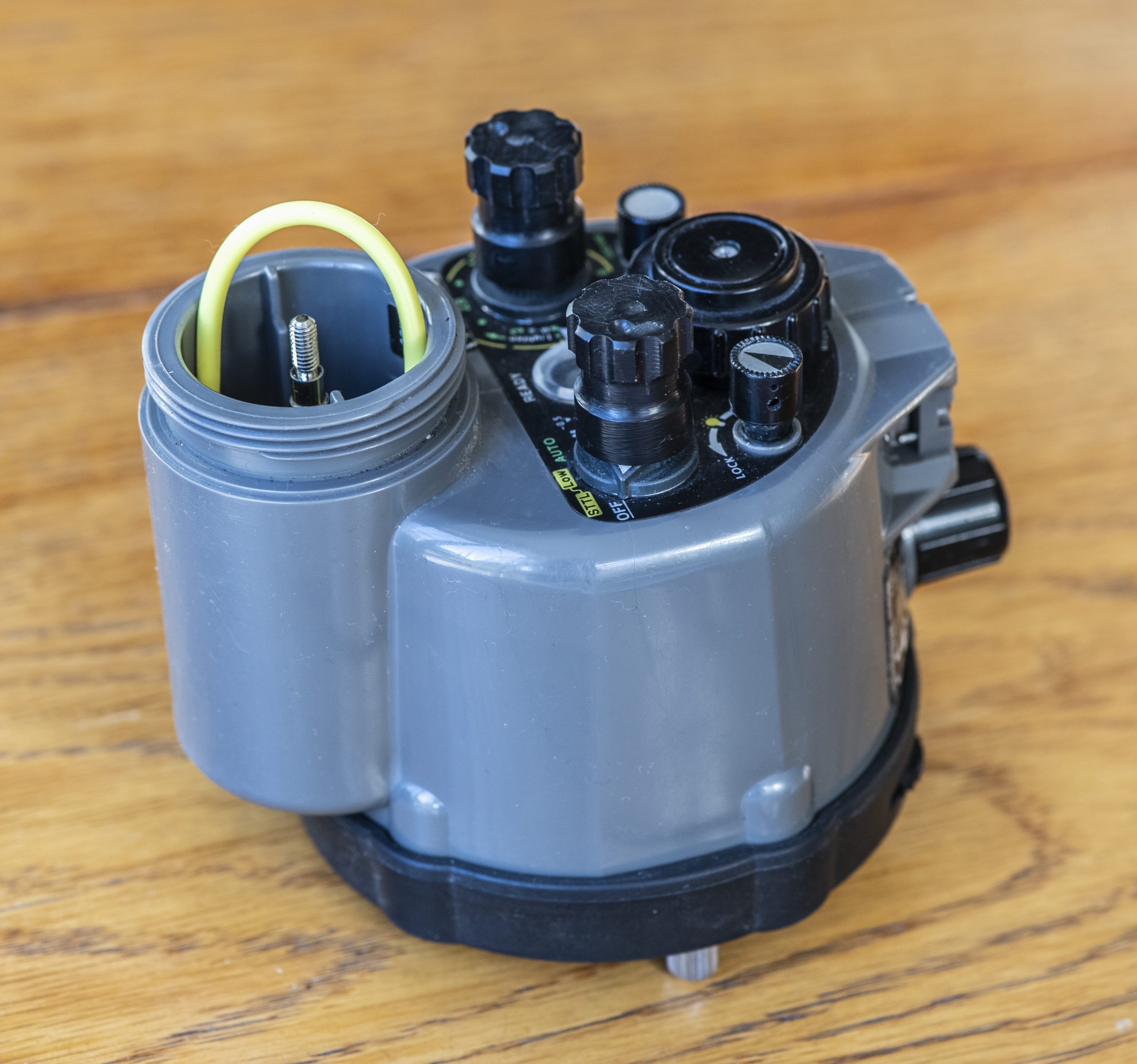
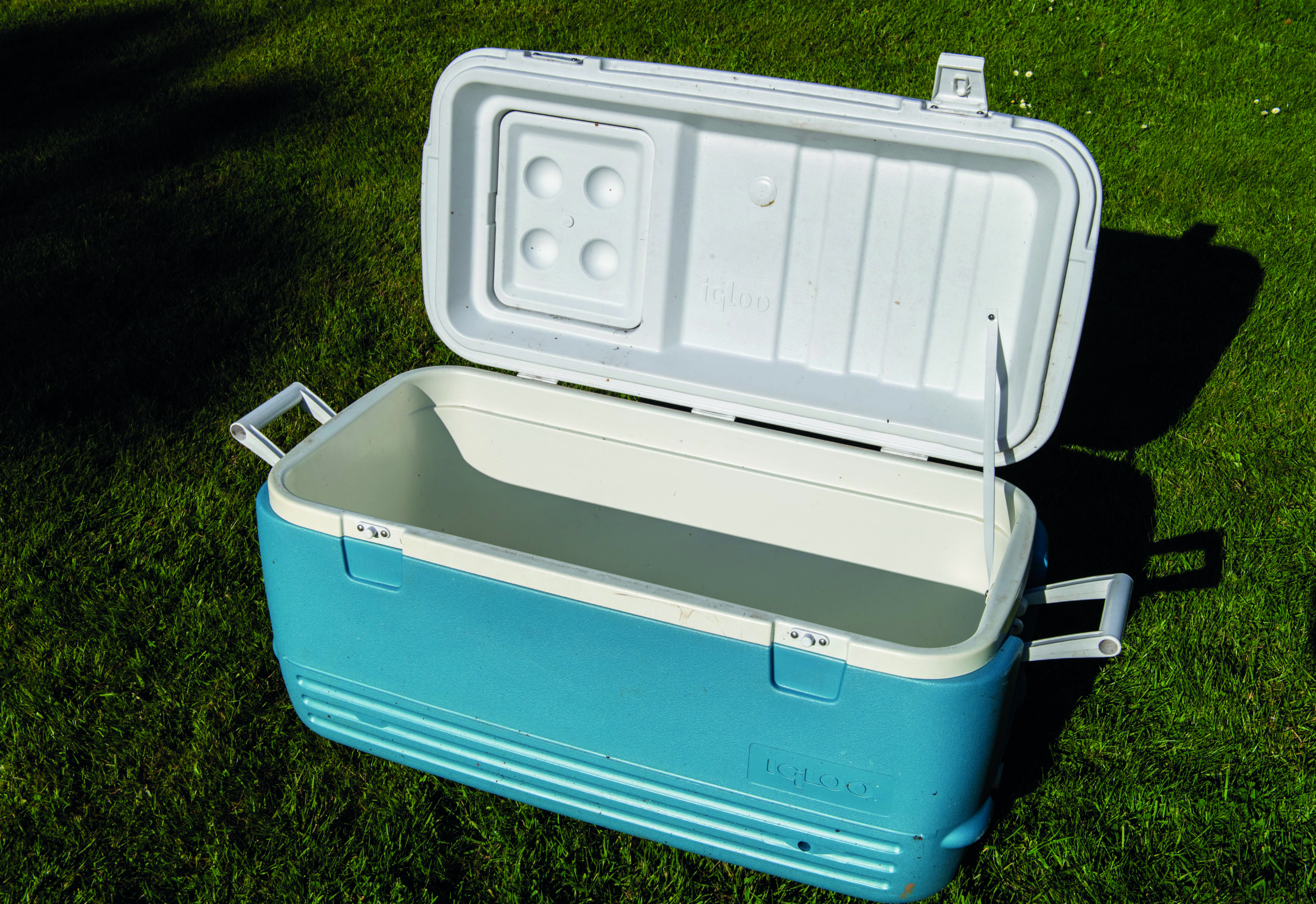
PAUL DUXFIELD
Ok, how do I care for my photo kit and make sure it’s all tickety boo before and after a trip? Pre-trip, as hinted at on the last Shoot Like A Pro, I put all of my kit together before packing as if I was going on an imminent dive.
I even go as far as taking a couple of shots with both wide-angle and macro lenses so that I know ahead of time that nothing in the chain will let me down. This allows me to see if I have any problems with things like fibre-optic cables, loose clamps, worn O-rings, etc.
I will then grease all the O-rings, not forgetting the less-obvious ones like the ones on the strobes that are for the less-fashionable electronic synch. As these rarely get used, there is a tendency to forget about them, but a regular peek and a regrease will keep them in tip top condition.
Don’t forget vital stuff like battery chargers – on my last trip I found out that one of my chargers had given up the ghost, I have a spare, but it was best to know in good time.
Check your memory cards too, they can fail, so make sure you’ve got back-ups, and free up enough space on your hard drives so that you don’t run out mid-trip.
Upon my return, all the waterproof stuff gets a thorough rinse. I fill up the bath and leave it all to soak for a few hours, pressing all the buttons periodically. I then put it on the draining board to air dry, before putting it all away ready for next time once it’s completely moisture-free.
And so as not to waste water and use the time more effectively, after I’ve removed all the camera kit from the bath, I’ll put all my dive kit in the bath water too so it can get rinsed.
ANNE MEDCALF
From our experience as dealers of underwater photography equipment, one of the best bits of advice we can suggest is, weeks before a trip, set your camera rig up. Check that everything is functioning properly and that nothing is missing or broken. Underwater photography equipment is very specialist, manufacturers often only produce small quantities at a time and because of the diversity of items, dealers and importers don’t hold large stocks. This means if you order at the last minute, you may not get what you need before a trip.
We keep all our kit as organised as possible in a set of labelled boxes when we aren’t diving. This is a necessity for us given how much equipment we take on a trip. It saves the stress of hunting around for things and reduces the chance that something will get left behind.
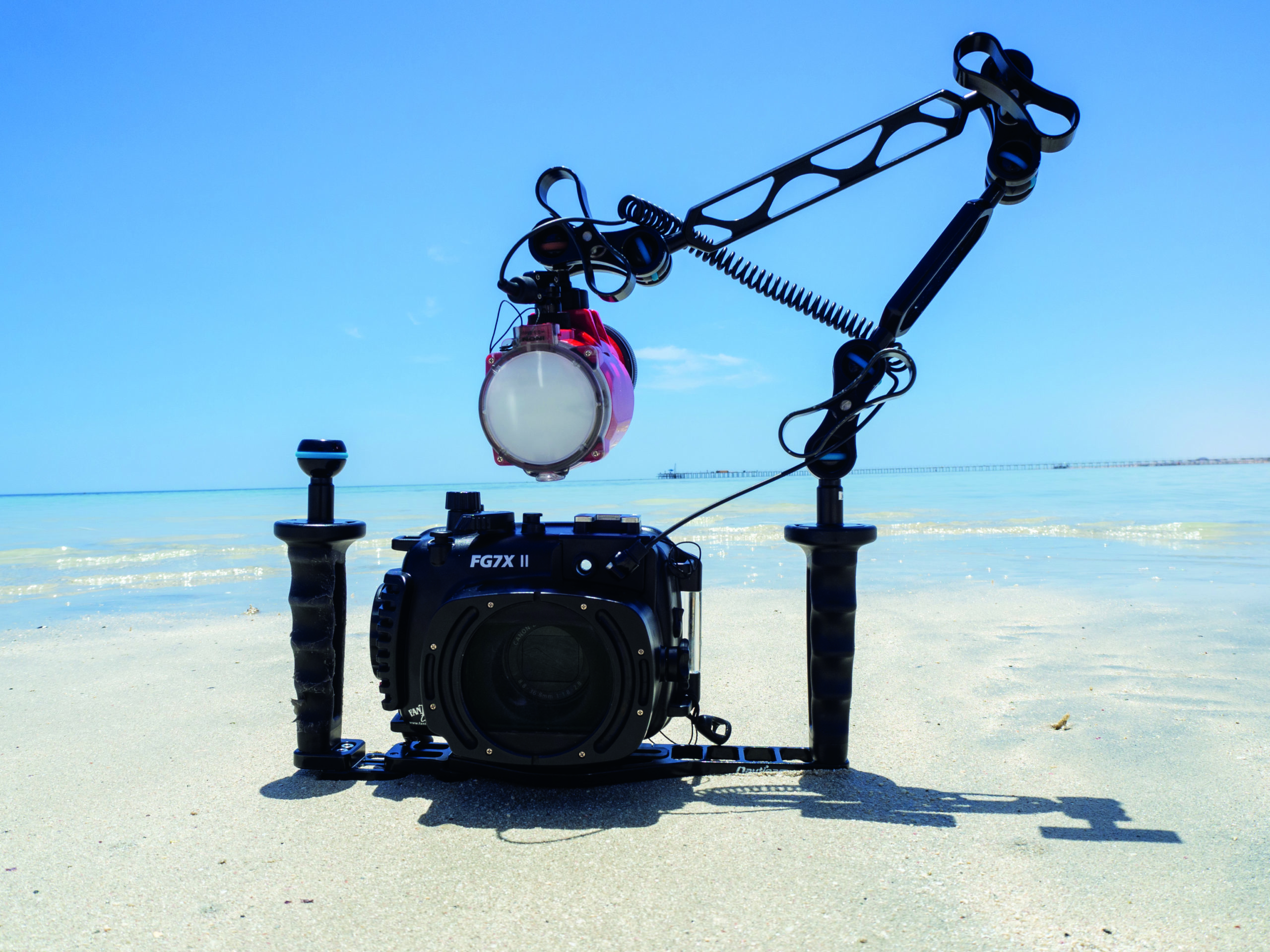
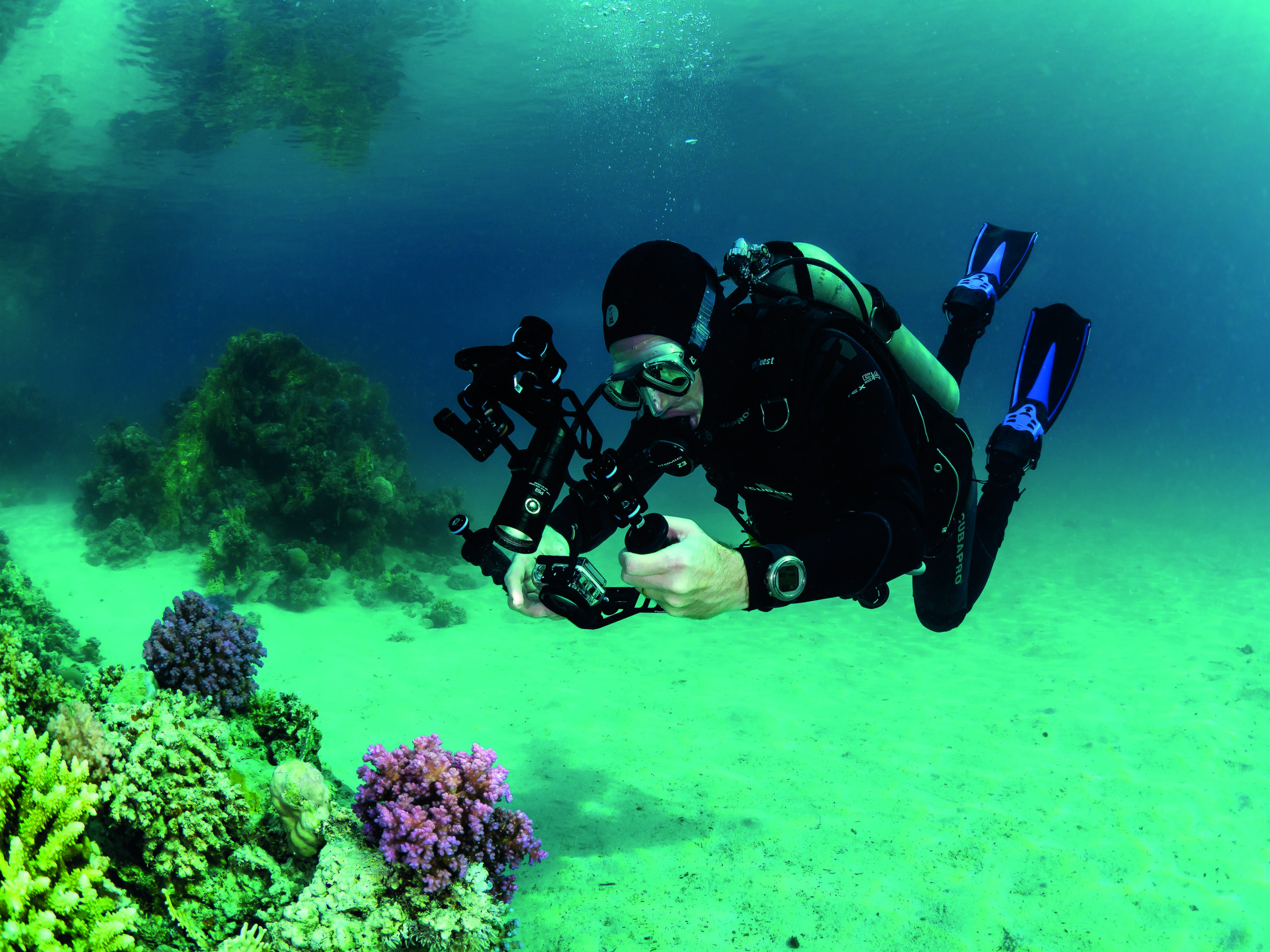
We also use a lot of equipment that has been loaned to us by manufacturers and importers to try out. Keeping track of what came from who and when it needs to be returned is a job in itself.
All this gear gets carefully checked and cleaned before it hits the water along with our own. The last thing you want when someone lends you some shiny toys is for it to be flooded for the sake of a bit of time cleaning an O-ring. If you do borrow or rent equipment, do the same, don’t presume the last user put it away ready to use.
PHIL MEDCALF
Lists play a big role in how we get things done on a diving trip. As we mentioned last month we try and have a list of everything we take somewhere with us so we can make sure it all makes it back home at the end. Providing replacements for lost equipment is a small but significant portion of our sales business.
Common things left behind or mistakenly picked up by other divers include batteries, chargers and housing port covers. Create a checklist before you pack everything and make sure it is all still there when you pack to come home. This will at least give you the chance to search the boat or resort before the journey back. During the trip, you’ll likely discover a few things that you should’ve brought – bung these on the list for the next expedition.
The other list we put a lot of thought into when prepping for a trip is our ‘shot list’. This is a plan of what pictures we want to get while we are diving somewhere. For us it’s a mixture of test shots using different equipment, and images we need for blogs, talks and workshops.
But it also includes any funny ideas we have along the lines of ‘I wonder whether this will work?’. Look at what pictures you want to achieve and put it on the list. Planning like this can really help to take your photography up a notch.
MARIO VITALINI
Some of the best photo locations are far away and there is nothing worse than to arrive to your destination after hours of travelling and realise that you left a key piece of equipment behind.
To avoid this, I always recommend checking all your photo equipment before you start packing and, more important, assemble everything at least once, If you are planning to use different lenses make sure you set up your kit in every configuration you intend to use to ensure you have all the bits you will need and making sure everything is working.
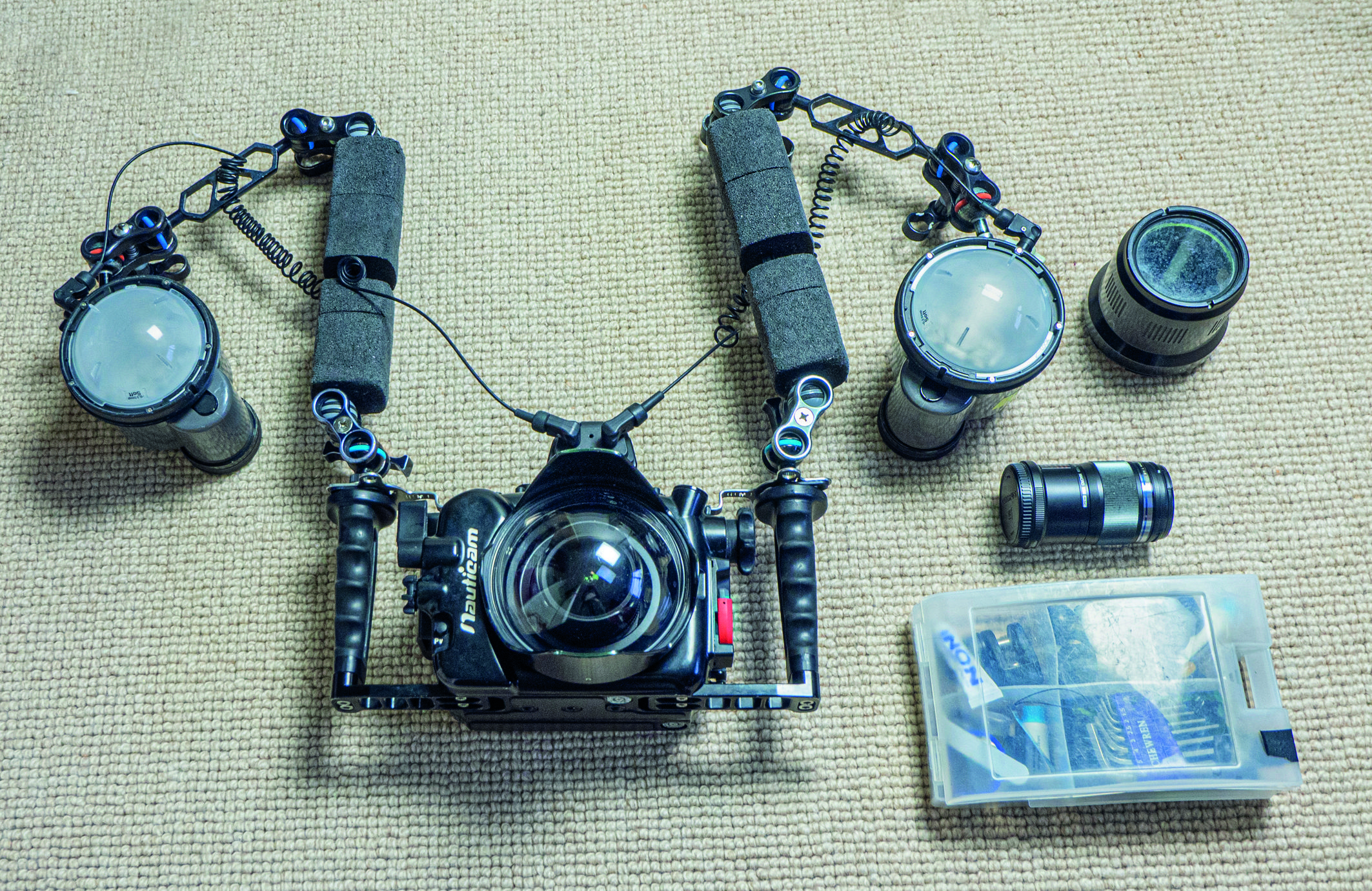
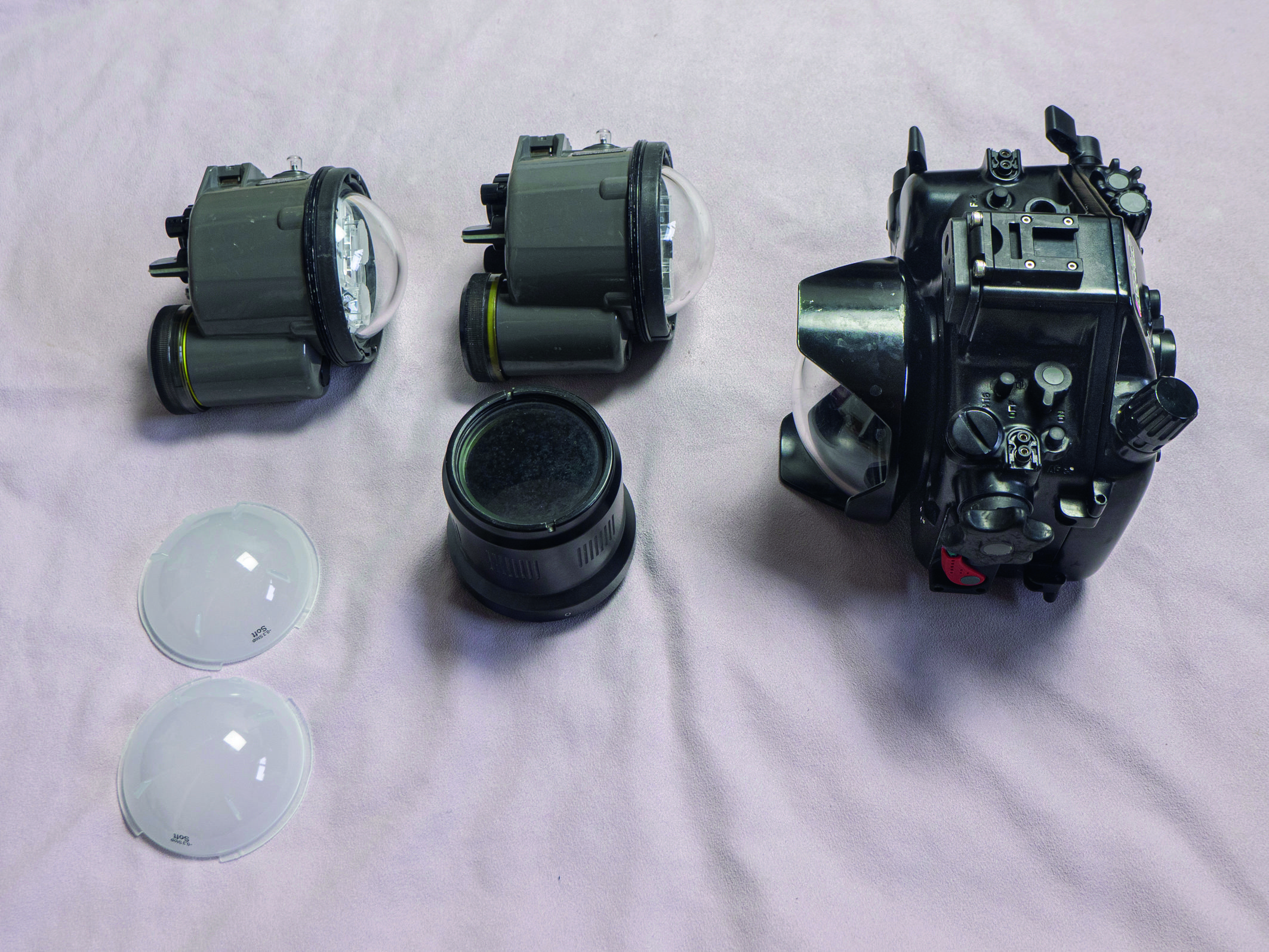
After this I normally take everything apart, add any spares I may need such as O-rings, grease and my housing maintenance kit, and put it in a box so is all together for when I start packing.
Rinsing your camera kit after every dive is always a good practice and helps to prevent any problems. At the end of the trip, after the last dive, a more-thorough rinse is not a bad idea but when back at home, reassemble the housing and ports and give it a proper soak in a big plastic container or in the bath with lukewarm water.
Work all the dials and buttons to ensure you rinse out all the salt and plankton. Sometimes, especially if I’ve been diving in particularly salty environments such as the Red Sea or in sandy spots like Lembeh, I leave my kit in water for a couple of days.
Use a micro-fibre towel to dry ports and domes to avoid watermarks. I then remove all the O-rings, grease them as when I use them in the housing, and store them in a plastic bag. I then store the housing ports and strobes in a cotton bag inside a cardboard box ready for my next trip.
Photographs by Paul Duxfield, Mario Vitalini, Martyn Guess, and Anne and Phil Medcalf
